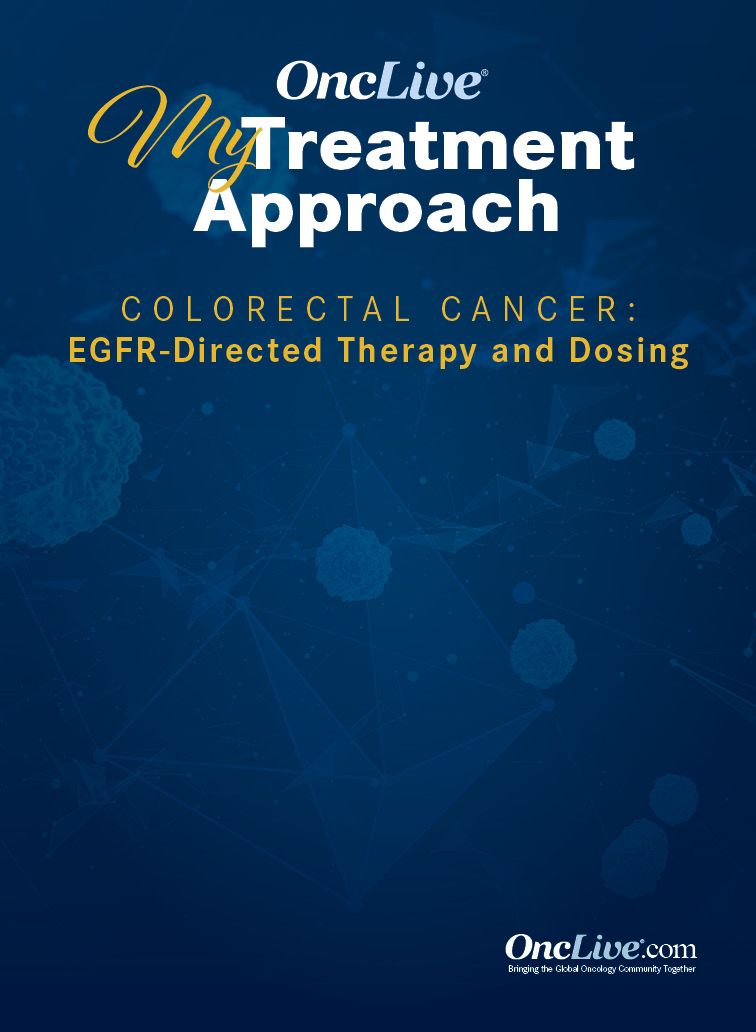Changes in Cetuximab Dosing Schedule in mCRC
Reactions to recent changes approved by the FDA to the dosing schedule of cetuximab for metastatic colorectal cancer and the value of real-word data on clinical practice patterns in the community when administering this drug.
EP: 1.Trends in Colorectal Cancer Incidence
EP: 2.Molecular Testing in Metastatic Colorectal Cancer
EP: 3.Next-Generation Sequencing in Metastatic Colorectal Cancer
EP: 4.Selecting Systemic Therapy for Newly Diagnosed mCRC
EP: 5.Changes in Cetuximab Dosing Schedule in mCRC
EP: 6.Sequencing Anti-EGFR Therapy in mCRC
EP: 7.Later-Line Treatment Options for mCRC
EP: 8.EGFR Therapy for mCRC: Dermatologic Toxicity
EP: 9.Future Directions in mCRC
EP: 10.KRAS G12C Inhibitors in mCRC
Zev A. Wainberg, MD: Cetuximab has been around for a long time. Some centers have veered away from it because of a rash, and some centers have veered away from it because of infusion reactions that are seen with chimeric antibodies. But it’s still part of the mainstay therapy for the majority of patients getting EGFR antibody therapy in the United States. As you saw, we had some recent studies showing changes in the label after many years. I wonder if you could comment on some of that and what the implications of that are.
Jaffer Ajani, MD: The label approved 500 mg/m2 every 2 weeks, and there are some comparative studies, especially PK modeling with weekly dosing. Some studies and meta-analyses show there’s no difference in the end points, such as survival and PFS [progression-free survival]. There are at least 3 retrospective trials that I saw in at ESMO [European Society for Medical Oncology Congress], ASCO [American Society of Clinical Oncology Annual Meeting], and ASCO GI [Genitourinary Cancers Symposium]. The advantage of every 2 weeks is that you can synchronize it with your oxaliplatin-based regimen, except for capecitabine-oxaliplatin—that could be an issue. But FOLFIRI [5-fluorouracil, leucovorin, irinotecan]or FOLFOX [5-fluorouracil, leucovorin, oxaliplatin] every-2-week regimen is popular, and it’s been used at my center even before the FDA approval. It’s well tolerated, it’s not excessive, and you get a spectrum of adverse effects, but most of us know how to manage those or prevent from them becoming severe.
Zev A. Wainberg, MD: All these years later, we see a package label on a drug that has been around for so many years. Cetuximab has been approved for colon cancer—it’s gone through different iterations—for nearly 20 years. Now we see a package label that changes based on mostly retrospective data, which reinforce what we’ve been doing in the real world. One of the interesting things that these presentations show is that real-world evidence can sometimes be used to change a package label. Real-world evidence has probably gained a lot more credibility scientifically. We’re using databases that are not necessarily prospectively aligned but that take large numbers of people being treated and look at efficacy and toxicity end points. One of these studies was a meta-analysis, of course, which compared biweekly cetuximab to weekly cetuximab. I really didn’t see any jeopardy as it relates to efficacy or toxicity. The other 2 were primarily real-world data presented at ESMO and ASCO GI, but could you comment briefly on what you think about using real-world data to guide regulatory decisions?
Jaffer Ajani, MD: That’s not necessarily very common. One example that comes to mind is the story about KRAS. It was all retrospective: KRAS mutation and lack of anti-EGFR therapy. Initially there was a lot of doubt about retrospective data driving decisions, but eventually it panned out in every prospective study and every study later when the KRAS status was known. There is some merit to probing different characteristics like that, but it’s certainly not common.
I just changed to other drugs. There’s not a lot of solid prospective data. It will be nivolumab every 4 weeks or pembrolizumab every 6 weeks. There are some good data, but it’s not like nivolumab or pembrolizumab data. The level of quality is not that high, but they’re still useful.
Zev A. Wainberg, MD: I agree. They’re never going to replace approvals or accelerated approvals for agents, but it is interesting. As time goes on, this recognition by the FDA and the European Medicines Agency that we do take some elements of real-world data and use them to inform community practice. It was a good example, and the KRAS example is another good story of how that’s evolved with cetuximab. And this, with this biweekly regimen, is what people have been doing for several years. It’s a reflection of what’s going on in the community. There’s increased recognition, primarily based on studies in Europe, that 500 mg/m2 of cetuximab biweekly is just as good. Now it can be incorporated with FOLFOX [5-fluorouracil, leucovorin, oxaliplatin] or with FOLFIRI [5-fluorouracil, leucovorin, irinotecan] or whatever biweekly regimen you choose, and you feel good you’re not jeopardizing safety and efficacy.
Transcript Edited for Clarity




